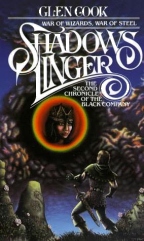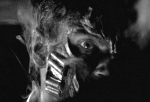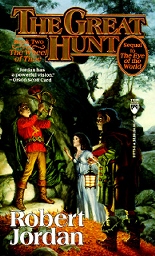 Second book of a trilogy, but also part of a series of ten books in total. I didn’t comment the first book, but I read it. It was wonderful.
Second book of a trilogy, but also part of a series of ten books in total. I didn’t comment the first book, but I read it. It was wonderful.
In order to explain what I think about this second book, I have to explain a few things about the first, because I started reading with some expectations and those expectations had a weight on my opinion about the book. The fact is that I loved the first book. For its setting, its pace, its structure. It’s from many points of view a “perfect” book. Every piece fits together and it’s masterfully planned and executed. In 310 pages Glen Cook wraps up an epic campaign that other authors would pan for thee books of 600+ pages. And this without leaving you feeling like you missed something.
The structure (first book, not this one) is probably the very best quality and what sets the book apart. Seven chapters, about 60 pages each. Each of these chapters are “standalone”, in the sense that you could read one in the middle of the book without feeling like you are missing a piece of the story, and so can’t understand what the hell is going on. Each also has its start, development and conclusions. So each chapter feels like a novella on its own. This isn’t all, the real quality is that not only the story is wrapped up perfectly around this structure, but that each chapter/novella adds plot elements and characters that contribute and move steadily onward the overall story that spans the whole book. It feels as modern as possible, like it happens now with the most successful TV series, that need, from a side being self-contained to be accessible to who didn’t follow every episode and remembers every detail, and from the other plot elements that link all the episodes together, giving the series its continuity and overall development. So no stalling. The Black Company follows the same principle and Glen Cook executed this masterfully in this first book. It couldn’t have been plotted and structured better. I had a few minor complaints (like how some “spoilers” were handled) but they are just small details toward the end.
I consider that book exceptional because it’s as steady as possible. There’s no slacking, no slows down, no weak parts. In 310 pages the author shows how he has perfect control over his story. And it’s very good, with plenty of unexpected and clever twists. With an end that doesn’t disappoint. The story could have just ended there, but it didn’t.
I don’t know if more books were planned from the beginning, the flow of the second book isn’t perfectly smooth, but still coherent enough to not give the feel of something artificially excused. The real problem is that the structure that made the first book wonderful, was completely discarded for this sequel. Instead of long chapters and self contained stories, we have this time a linear plot developing through the book, and organized with very short chapters (often just 4-5 pages) and an attempt to do different POV. I honestly didn’t like this choice as it gives a too fragmented feel. On the other side the chapters are so short that you keep turning the pages and read more as the next “exit” point is just two pages away, and the end of one chapter always making you wish to turn the page and look for other developments.
Gone the mastery of the structure, but also gone the overall “feel”. No more the militaresque campaign, but a bend toward a “spook”, supernatural theme, leaving you with the impression you are reading a fantasy version of Dracula. I was disappointed because I wanted more of the same, and instead I found something much different, with a plot much, much less inspired and deep. In fact I was much deluded by this second book, but as I went on reading it captured my interest more.
The first 2/3 of the book present two plots, one encapsulating the other. The book wasn’t a complete disappointment because I think Glen Cook achieved his purpose. This purpose was to make readers care more about the inner plot, instead of the outer. Without spoilering much, there’s an “outer” plot still about the Lady and the Dominator fighting each other, with the Black Company caught in between, just trying to survive and choose the lesser evil. With the Dominator rising his castle near a small town lost up the north of the world, forgotten by all. The “inner” plot is instead about the day-to-day miserable life of the people of that town. These two plots initially made distinct also geographically as the scenes with the Company happen at the other side of the world, also used to show how the Lady uses liberally the Company, tossed from one side of the world to the other. You start reading with all the hype once again on the Black Company (the first scene is superb, from the point of view of kids to return the reader the sense of wonder and badassness of the Company), but progressively the focus moves toward those who look like minor characters, and that instead become major ones. In fact Glen Cook artificially zones out the Black Company itself to narrate a “covert” operation with just a few members of it, that are “flown” far away. So there’s already here the will to move away from the theme and execution of the first book.
Even in this case, though, the trick that holds the second book is the same of the first: small things affecting big things. Just applied to a different context. The whole coolness of the first book was “watching” the normal men of the Black Company walk among much powerful beings. Giving the impression of gods walking among men. But gods made of flesh, powerful and intimidating, but with their own weakness. And then the fun of watching clever men fuck with the power of these gods. Because you shouldn’t underestimating the Black Company. This shift of power and point of view from the bottom was what made the first book awesome. In the second book this theme is applied differently, there’s less the same kind of direct confrontation, but the mess-up that feeds the story is still about some smallish acts that generate a disaster. Just think at the miserable people of this lost town, just thinking selfishly how to survive the next winter, stealing money to each other, all caught in their personal dramas… While a black castle is growing just over their shoulders, growing on their filth and miserableness.
And then you have the climax: huge glowing balls rolling around, invisible giant feet stomping the ground, flying carpets airstrikes, eggs exploding into fire and a black castle made of goo and smelling pretty bad too.
Before it all happens, though, there’s another strong point of the book, that is the return of the Company into the scene. And also the demonstration of why and how they are cool: Get things done. Quickly. Efficiently. Competently.
Then the mess. And, as you may guess from my words above, a really weird mess. Even if helped by the strong realistic way Glen Cook has to describe things. While the scene presented is so surreal to be silly, it’s still described in a “serious” way that makes it still consistent and believable. Even if I have to say that the descriptions of the first book were more inspired, beautiful and better written. The prose of this second book in general has a slight dip in quality.
Those five immediately encountered the portal from elsewhere that expelled the cold breath of the infinite. They all perished.
And once again it’s interesting the contrast. The weird magery stuff from a side, and the concreteness, down-to-earth approach and mindset that the Company has.
Another aspect I was thinking about but that isn’t underlined in the book, is how there’s a sort of meta-fiction. The book you are reading that you have in your hands, exists also in the fictional world as a physical entity. In fact it’s written in first person, and the protagonists writes and “records” what happens, as it is his other duty within the Company, the annalist. So sometimes there are references at how the book itself was saved from danger. Because it’s implied that if you have it in your hands, then it would have been saved somehow. As if the Company really existed.
Last thing about the style: as I said the book is written, like the first, in first person. But feeling like third. Even more so in this book than the first Glen Cook plays with this concept. It’s not present tense, as the events are “recorded” by the annalist, and this time there’s an attempt at different POV, so scenes where the writer isn’t directly present, and so written in third person. It’s a book written in first person but where the writer is not the protagonist, only an “observer” that, due to the context, is also sometimes present physically and doing things. It’s interesting.
All in all the book disappointed me because the militaresque feel I liked and the cleverness of the plot is mostly gone, replaced by an unimaginative spook theme that was kept throughout the whole book (instead of occupying just one chapter and then moving on, as in the first book). The writing is a bit worse, the structure and plot not as good. But at the same time it’s not as deluding as I initially thought. It’s as if Glen Cook started from an awful concept, but managed to still pour good things into it. I don’t consider this an exceptional book, especially because I keep comparing it with the first and in no way it can stand that comparison. But, on its own, I enjoyed reading it and the Company has still not lost any charisma.
Glen Cook has less aces up his sleeve, but he still knows how to play the game.

 Review in short:
Review in short: I don’t plan to turn this into a fantasy book review site because those reviews are in their own ways a literary work and I can’t expect to do it without a perfect grasp of English (which is again my second language). I also read slowly so I can’t make a satisfying blog with reviews. They would appear too rarely. So here are some conclusive considerations about “The Great Hunt”.
I don’t plan to turn this into a fantasy book review site because those reviews are in their own ways a literary work and I can’t expect to do it without a perfect grasp of English (which is again my second language). I also read slowly so I can’t make a satisfying blog with reviews. They would appear too rarely. So here are some conclusive considerations about “The Great Hunt”.